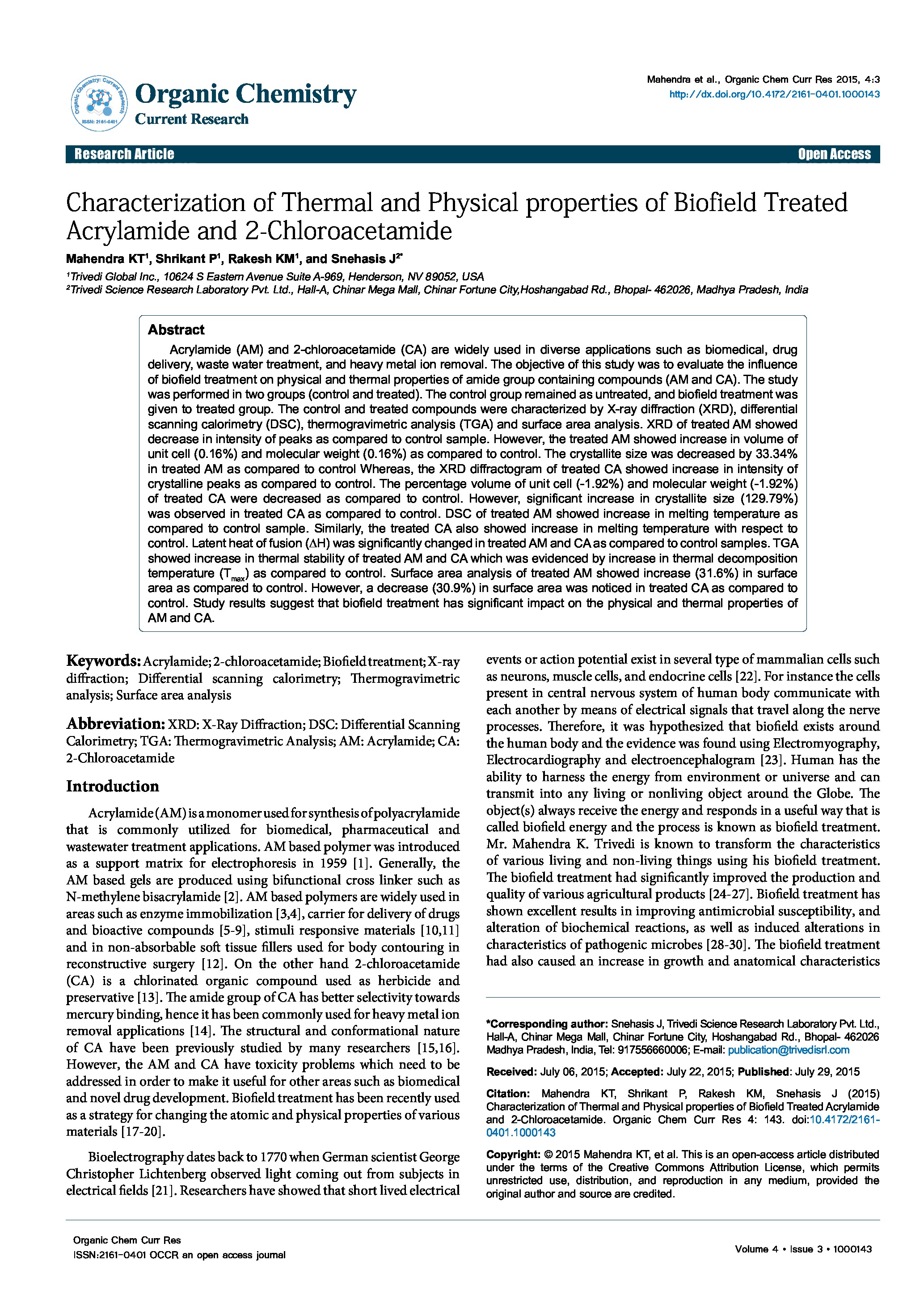Characterization of Thermal and Physical properties of Biofield Treated Acrylamide and 2-Chloroacetamide
Affiliation
Trivedi Global Inc., Trivedi Science Research Laboratory Pvt. Ltd.
Main category
Natural Sciences (Analytical Chemistry, Method Development (Chemistr)
Abstract
Acrylamide (AM) and 2-chloroacetamide (CA) are widely used in diverse applications such as biomedical, drug delivery, waste water treatment, and heavy metal ion removal. The objective of this study was to evaluate the influence of biofield treatment on physical and thermal properties of amide group containing compounds (AM and CA). The study was performed in two groups (control and treated). The control group remained as untreated, and biofield treatment was given to treated group. The control and treated compounds were characterized by X-ray diffraction (XRD), differential scanning calorimetry (DSC), thermogravimetric analysis (TGA) and surface area analysis. XRD of treated AM showed decrease in intensity of peaks as compared to control sample. However, the treated AM showed increase in volume of unit cell (0.16%) and molecular weight (0.16%) as compared to control. The crystallite size was decreased by 33.34% in treated AM as compared to control Whereas, the XRD diffractogram of treated CA showed increase in intensity of crystalline peaks as compared to control. The percentage volume of unit cell (-1.92%) and molecular weight (-1.92%) of treated CA were decreased as compared to control. However, significant increase in crystallite size (129.79%) was observed in treated CA as compared to control. DSC of treated AM showed increase in melting temperature as compared to control sample. Similarly, the treated CA also showed increase in melting temperature with respect to control. Latent heat of fusion (∆H) was significantly changed in treated AM and CA as compared to control samples. TGA showed increase in thermal stability of treated AM and CA which was evidenced by increase in thermal decomposition temperature (Tmax) as compared to control. Surface area analysis of treated AM showed increase (31.6%) in surface area as compared to control. However, a decrease (30.9%) in surface area was noticed in treated CA as compared to control. Study results suggest that biofield treatment has significant impact on the physical and thermal properties of AM and CA.
DOI
10.18147/smn.2016/paper:230
Do you have problems viewing the pdf-file? Download paper
here
If the paper contains inappropriate content, please
report the paper. You will be redirected to the landing page.
